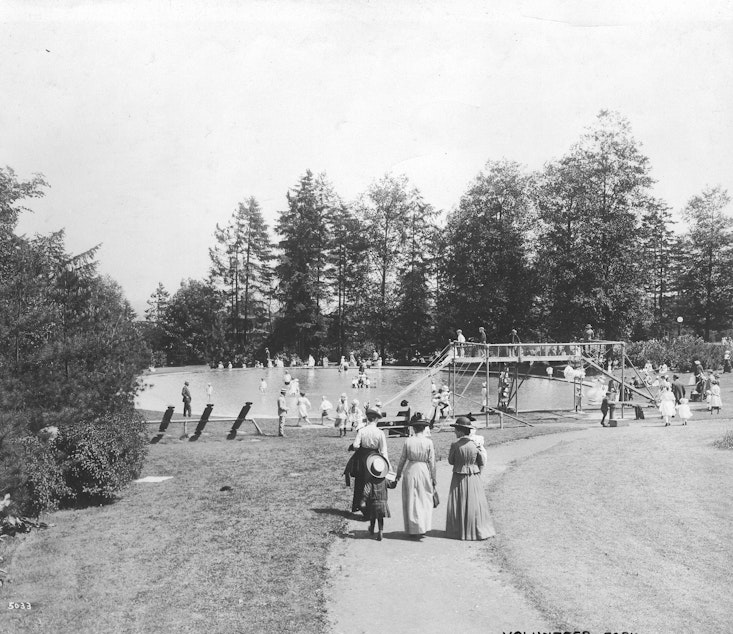Why is there a reservoir in Volunteer Park?

If you've ever taken a walk around Volunteer Park, in the Capitol Hill neighborhood of Seattle, you know that smack dab in the middle of this bustling public space is a pool of water.
It's surrounded by a chain-link fence, with a walking path looping around the perimeter, and signs saying, "Do not feed the birds."
It's not just a reflecting pool or a lake. It’s a reservoir.
And that go us curious — how did it get there? Also, are we really drinking that water?
Jennifer Ott, who chairs the Volunteer Park Trust, an organization dedicated to preserving and enhancing Seattle's historic park, says the reservoir existed before Volunteer Park was even built.
"And so when John Olmsted came to Seattle in 1903 to develop a park system for the city, he really looked at connecting these hilltop areas, some of which were already designated as parks, some were just water system elements at that time," Ott said.
Seattle's water system was designed in the 1900s to use gravity to get people their water.
"The water comes down from the Cedar River watershed, the gravity of the downhill movement of the water pushes it back up to the top of each of our hills, where the reservoirs are located," Ott said. "And then from those reservoirs, it falls by gravity to the homes and businesses that need the water. And so this one is for this area that is served by this reservoir everything downhill from it."
Sponsored
Or at least, it was. Currently the Volunteer Park reservoir isn't in use by the city.
But Seattle Public Utilities maintains the reservoir, just in case it's needed in the future.
"So we did a major seismic study in 2018, and looked at what would happen in the event of a large earthquake," says Alex Chen, director of drinking water at Seattle Public Utilities. "We understood that the level of seismic risk now is much bigger than what we had looked at in 1990, our last major seismic study. Everyone's heard about the Cascadia subduction zone and Seattle fault earthquakes. And what we decided is that even though the Volunteer Reservoir wasn't needed as part of the everyday drinking water system, it's really critical after emergencies for emergency storage of water for firefighting. So on an everyday basis, it's disconnected from the drinking water system. But it's able to be used for firefighting after major emergencies."
There's also the possibility, with climate change and population growth, that the reservoir might be needed in the future.
But if the city decided it did want to use the reservoir for drinking water, it would likely mean some major changes to Volunteer Park. Reservoirs are required to be capped - that means the water isn't visible or accessible by the public.
Sponsored
For the Volunteer Park Trust, the main goal is to keep some sort of water feature at the park, even if it's not always a reservoir.
"It's an essential part of the Olmstead design and the visitor experience. And so much would be lost if we lost that reflecting pool of the reservoir," Ott said. "We are poised and ready to support anything that will help kind of reach that vision. Anything that will help protect it."





